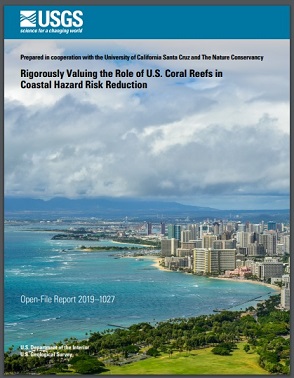
The degradation of coastal habitats, particularly coral reefs, raises risks by increasing the exposure of coastal communities to flooding hazards. The protective services of these natural defenses are not assessed in the same rigorous economic terms as artificial defenses, such as seawalls, and therefore often are not considered in decision making. Here we combine engineering, ecologic, geospatial, social, and economic tools to provide a rigorous valuation of the coastal protection benefits of all U.S. coral reefs in the States of Hawaiʻi and Florida, the territories of Guam, American Samoa, Puerto Rico, and Virgin Islands, and the Commonwealth of the Northern Mariana Islands. We follow risk-based valuation approaches to map flood zones at 10-squaremeter resolution along all 3,100+ kilometers of U.S. reef-lined shorelines for different storm probabilities to account for the effect of coral reefs in reducing coastal flooding. We quantify the coastal flood risk reduction benefits provided by coral reefs across storm return intervals using the latest information from the U.S. Census Bureau, Federal Emergency Management Agency, and Bureau of Economic Analysis to identify their annual expected benefits, a measure of the annual protection provided by coral reefs.












